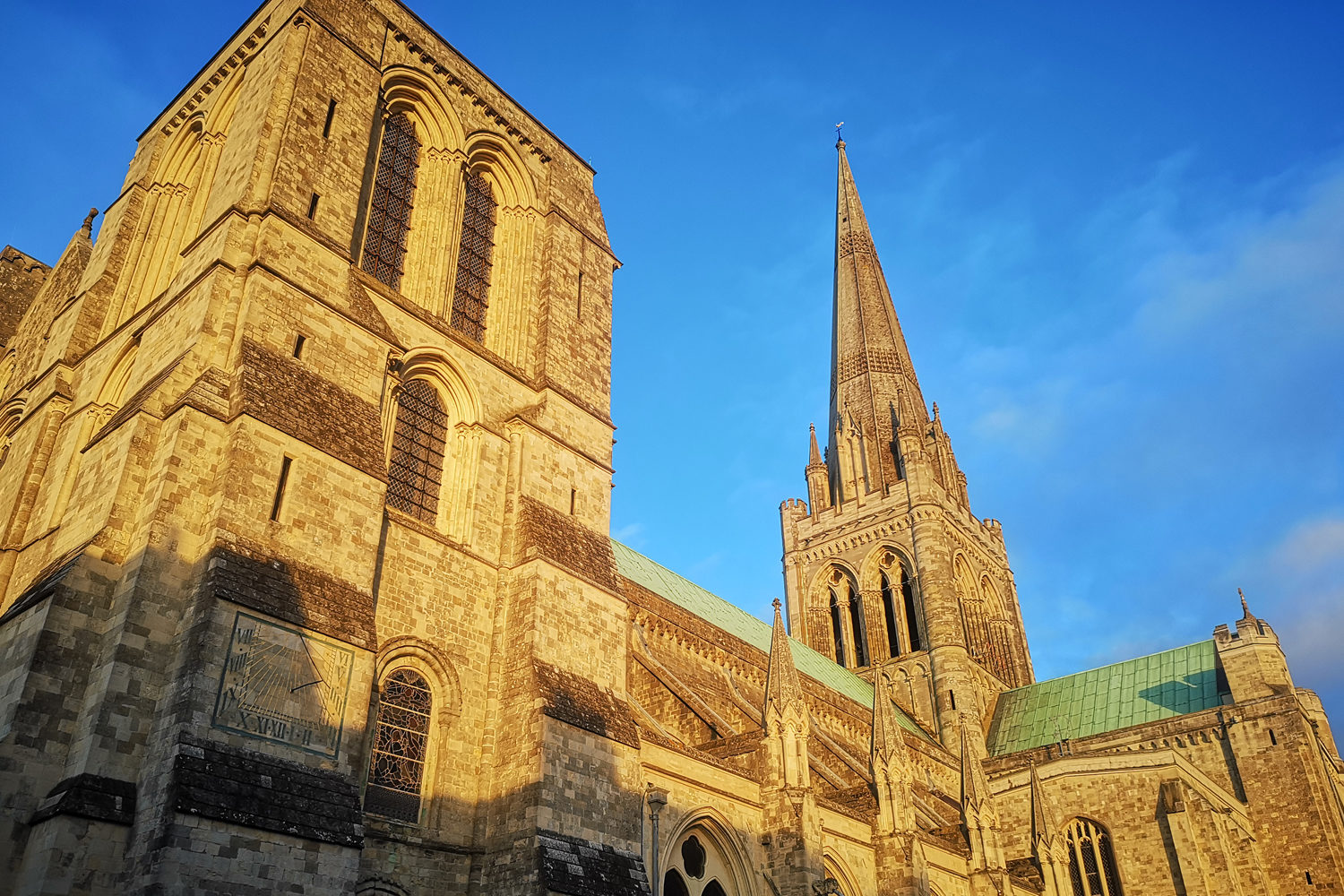Loading Tours...
Chichester
There is a theory that it may have been Chichester where the Romans landed to invade Britain in AD43.
It’s quite plausible that at least part of the Roman invasion could have been here, early evidence of storage facilities at Fishbourne Palace has been found and the local tribal king appears to have been friendly to the invaders. The Roman city was called Noviomagus Reginorum with 6ft thick walls, a Bath House (where the museum is now) a grid street plan radiated from the market centre and an Ampitheatre for gladiatorial combat now Priory Park.
The City was captured by the Saxon warrior Aelle in the 4th Cent and renamed after his son Cissa it was the capital of the Kingdom of Sussex. The city became one of Alfred the Great’s largest “Burghs” in defence against the Vikings and was the first in a line of burghs able to light warning beacons in case of Viking attack, all the way to London.
The City has a Cathedral built in the 11th century dedicated to the Holy Trinity. It has a distinctive green copper roof and contains a shrine to Saint Richard and a rare separate bell tower.
Inside the Cathedral is a tomb of a knight and his wife, unusually holding hands, it was the inspiration for poet laureate Phillip Larkins poem “An Arundel Tomb”.
Close to Chichester is a magnificent roman villa, Fishbourne Palace and Bosham village on the coast where King Canute liked to live and where his small daughter drowned in the harbour.
Have a date in mind?
Enquire About A Tour
If you would like to enquire about booking a tour then please get in touch.
Please get in touch by either calling us on 07880917179 or you can send us an email and we will get back to you as soon as possible.




